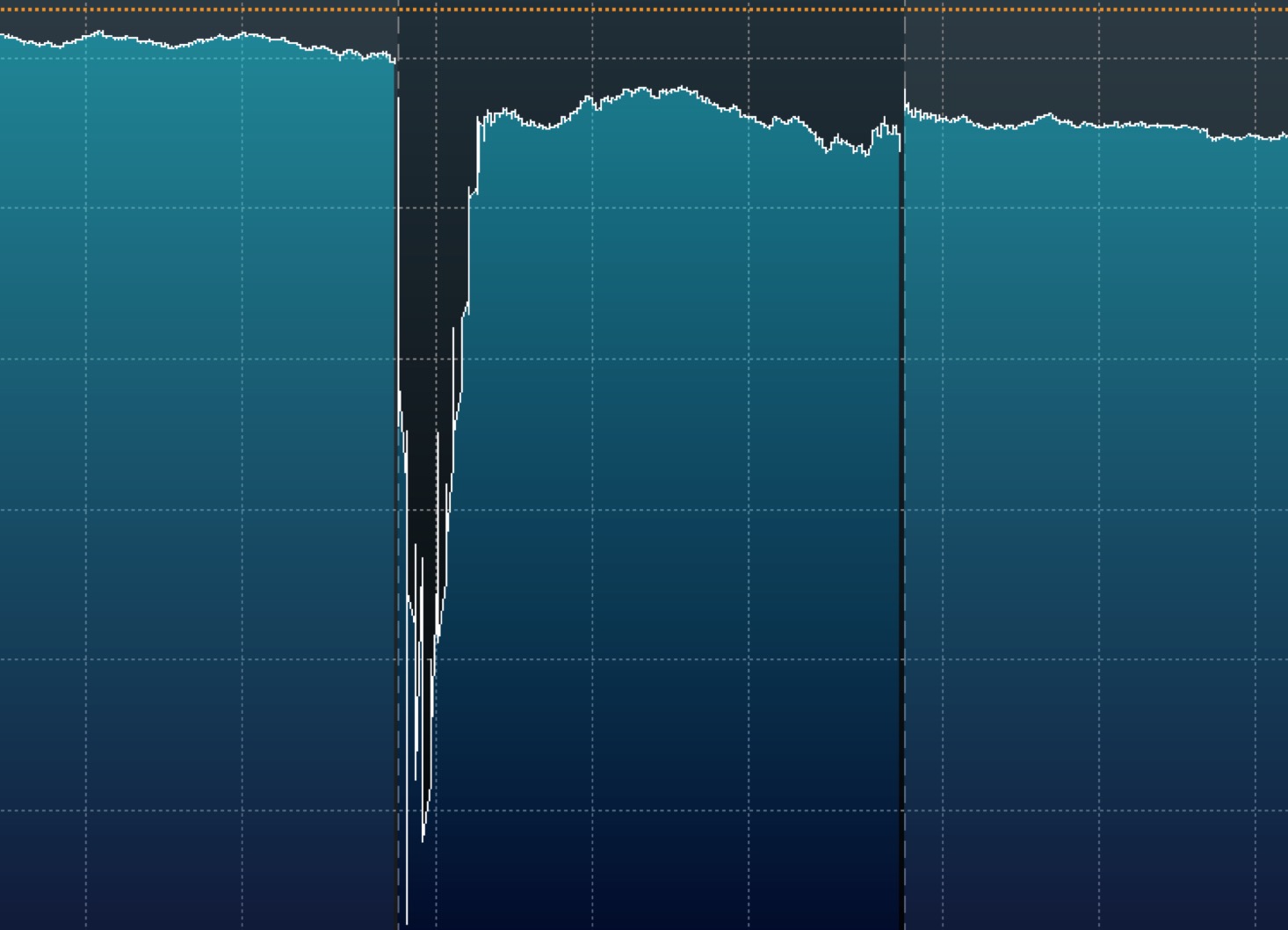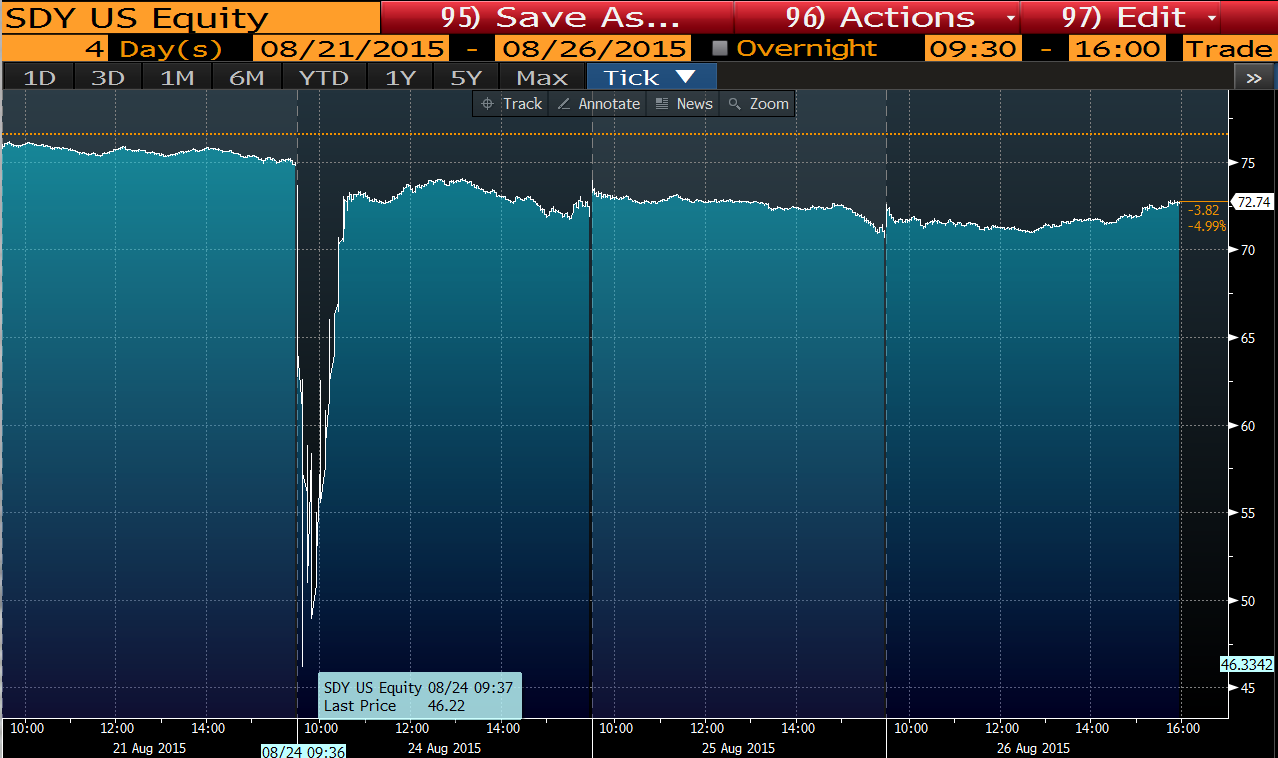The ETF Flash Crash
by Ben Carlson, A Wealth of Common Sense
In the early minutes of the stock market open on Monday morning things got a little crazy. After a huge whoosh down in overnight futures trading, the NASDAQ fell almost 9% while the S&P 500 was down around 6% right after the opening bell. Watching it in real time was a sight to behold. Less than 15 minutes later, a huge chunk of those losses were recovered. Many individual stocks saw even larger moves.
There are rules in place that dictate that the markets have something of a 5 minute cooling off period when they rise or fall by more than 5% in short order. Regulators are trying to slow a huge rise or fall in a stock from getting out of hand. There are obvious side effects to these rules and the overnight gap risk is something they can’t really control. These circuit breakers were triggered in all kinds of stocks Monday morning as investors and computers hit the sell button right at the open in hopes of getting out before things got out of hand.
ETFs weren’t spared from these rules and it quickly created some problems in some of the largest and well-known funds. Here’s the Guggenheim S&P 500 Equal Weight 500 ETF (RSP):
And the SPDR S&P Dividend ETF (SDY):
These funds were quickly down 30-40% as circuit breakers were triggered in both the underlying stocks and the ETFs themselves. This has led many to say that ETFs are part of the problem and that they are dangerous products. I don’t see this as ETFs being broken. This has more to do with those who are trading these ETFs and the underlying securities.
ETFs are exchange traded funds. They trade daily on the market exchanges (to state the obvious). Mutual funds, on the other hand, trade just once a day at the closing NAV price. To receive the benefit of daily liquidity you will at times have to deal with intraday market craziness, which could be amplified these days by computer trading systems and irrational market participants.
The algorithms and systematic trading systems probably had a lot to do with this as their auomatic triggers were hit, but there were also a few unsuspecting individuals who got dinged in the process. The Wall Street Journal ran a piece about the ETF issues and highlighted an advisor who got stuck with some of the bad prices on Monday morning:
Lansing, Mich.-based financial adviser Theodore Feight had set up an automatic sale for iShares Core U.S. Value ETF if it were to fall a certain amount. The ETF tumbled 34% in early trading, and instead of Mr. Feight’s position selling at his target price of $108.69, down 14%, it sold at $87.32, off 31%. By noon, the ETF had bounced back, and it ended the day down 4.3% at $121.18.
“I’m really disappointed,” said Mr. Feight, who invested in ETFs for more than a decade. “They weren’t as liquid as they should have been.”
Whenever something goes wrong in the markets (read: losses), people tend to look for someone or something to blame. If you put in a market sell order and there’s no one else who’s willing to take the other side of that trade at the price you’d like, you’re stuck with whatever price the market is currently throwing out there. This has nothing to do with the mechanics of ETFs, price discovery or liquidity and everything to do with user error.
I would be much more concerned if these huge dislocations weren’t fixed very in short order, but they were. Investors quickly stepped in to remedy the situation as you can see from the charts above. If you’re trading ETFs you can probably expect something like this to happen again. If you’re a long-term investor in ETFs I don’t see why something like this should be a concern to you.
For some reason, many investors operate under the assumption that markets should be perfect at all times. They never have been and they never will be. These hiccups are not “flaws in the modern market system.” They are flaws in human nature and poorly designed trading systems. It doesn’t matter what rules and regulations are put in place. These panics will happen on occasion.
Carlson’s Common Sense Investing Rule Number 27 states that you should never put yourself in the position of being a forced seller in the markets. This goes double during a panic. When investors (and quant trading systems) panic, markets may not always work the way you would like them to.
Source:
Stock-Market Tumult Exposes Flaws in Modern Markets (WSJ)
Copyright © A Wealth of Common Sense
















